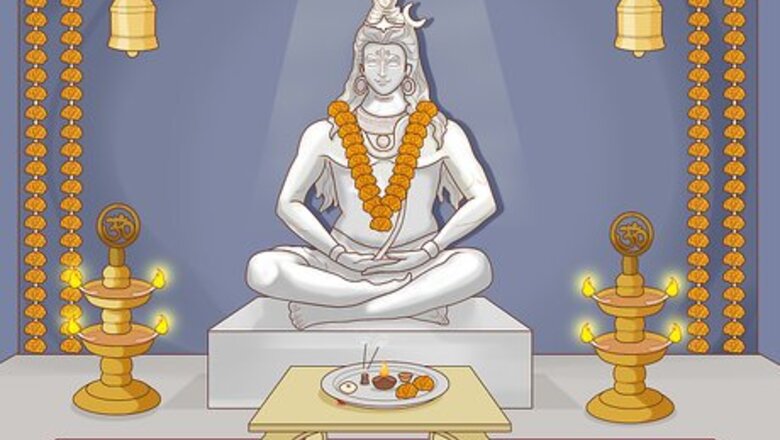
views
X
Research source
Worshipping Lord Shiva can be done by creating a shrine with his image and by performing specific rituals and prayers in his honor. You can also maintain a regular practice of worship so you stay connected to Lord Shiva.
Creating a Shrine to Lord Shiva

Get a sitting Shiva for a calm shrine. Lord Shiva can be depicted in statues and images sitting in a meditating position with his legs crossed and his hands in his lap. The sitting Shiva is ideal if you plan to meditate in front of the image often and want to create a calm, relaxed space. The sitting Shiva should still have several items on him that are traditional, such as a third eye, a cobra necklace, a three-pronged trident, and the vibhuti, which are 3 horizontal lines that are drawn on his forehead.

Opt for a dancing Shiva for an energetic shrine. The dancing Shiva will show be upright with his right leg extended outward and his arms raised upward. Lord Shiva is considered the master of dance in Shaivism and a dancing Shiva statue or image will create an energetic, lively atmosphere for the shrine. The dancing Shiva will have the same features as a sitting Shiva, but it will also usually have a demon dwarf being crushed at the feet of the dancing Shiva, which represents man’s ego and ignorance.

Create the shrine on an altar in the northeast corner of your home. This area is considered the best spot for idols in a home. Make sure the altar is raised on a table or countertop and that the spot is quiet and clean, with good natural lighting. You should be able to see the Shiva clearly, as this will encourage you to worship it. Avoid creating a shrine to Shiva at work, as his energy is usually too overpowering for the space and the altar can become cluttered. A shrine at home, where you can worship quietly, is ideal.

Have only 1 Lord Shiva and simple, bare decorations on the shrine. Having more than 1 statue or image of Lord Shiva can be overpowering and create opposing energies in your space. Lord Shiva does not respond to bright, lavish decorations or offerings so you can keep the altar simply by covering it with a white cloth.

Place the pooja room, or meditation spot, in front of the shrine. The traditional pooja room should be set up in front of the shrine so you can meditate in front of Lord Shiva easily. The pooja room can be simple, with an altar, a platform, and a statue or image of Lord Shiva. If you have the budget, you can create a more elaborate pooja room with lighting and a raised platform or an enclosed area.
Performing Rituals and Prayers to Lord Shiva
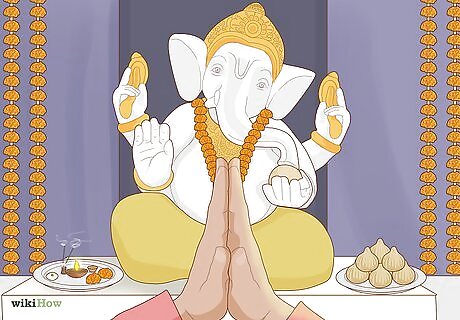
Worship Lord Ganesha before worshipping Lord Shiva. Lord Ganesha, the Hindu god of success, will to remove any obstacles you may be dealing with so you can worship and pray freely to Lord Shiva. You may pray to a statue or icon of Lord Ganesha first. Or you may address Lord Ganesha verbally to acknowledge him.
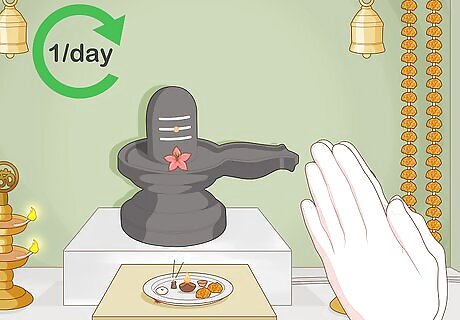
Pray to Lord Shiva at least once a day at home or at a temple. Create a routine where you worship or pray to Lord Shiva in the morning to start your day or at night to wind down before bed. Meditate in front of the shrine to Lord Shiva as a form of worship. You can also chant prayers, mantras and texts from Shaivism to worship Lord Shiva. If you go to a temple to worship, the Hindu priest may lead you on a chant to Lord Shiva as part of the temple service.
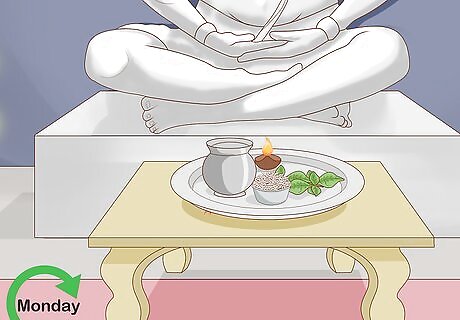
Present offerings like milk, bilwa leaves, or grains, especially on Mondays. Though you can pray to Lord Shiva any day, Mondays are considered sacred days of worship in the Hindu religion. Presenting cold milk, traditional bilva leaves, or grains like barley, millet, rice, and wheat are considered good, worthy offers for Lord Shiva. Offerings can increase your favor with the god. Avoid offerings like coconut water, turmeric, Ketaki flowers, and kumkum, as they are considered bad luck when given to Lord Shiva.
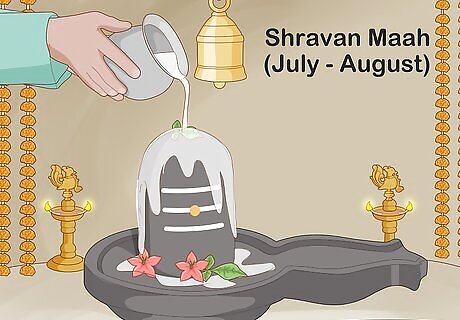
Worship Lord Shiva during Shravan Maa. Shravan Maa occurs from July-August and is considered a very auspicious month for worshipping Lord Shiva. In India, large celebrations are held during this month as well as austere practices like fasting and prayers. It is also a time to visit temples to worship Shiva several times a week or every day. You can also chant mantras and prayers at the temple to worship Shiva during this auspicious time and present offerings.
Maintaining a Worshipping Practice
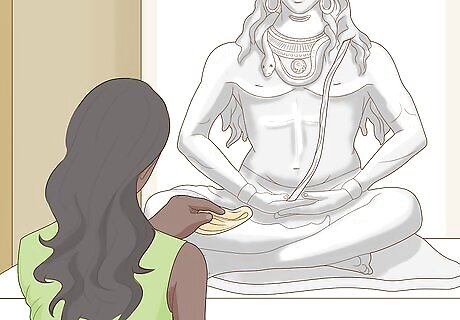
Keep your Shiva shrine at home clean and uncluttered. Maintain the shrine by giving it a regular clean so it is presentable for Lord Shiva. Make sure there is no debris or clutter on the shrine, as this can block the energy of Lord Shiva. You can also present different offerings to Lord Shiva and remove any old offerings.

Practice Sravanam with other followers of Lord Shiva once a week. Sravanam is a gathering of other Lord Shiva devotees and followers. The gatherings can occur in someone’s home at a shrine or at a Hindu temple, often on Mondays, the day of honour for Lord Shiva. The gatherings are a good way to strengthen your worshipping practice and your connection to Lord Shiva. Look for other followers of Lord Shiva in your area and suggest that you practice Sravanam together. You can then hold regular gatherings to strengthen your worshipping practice.
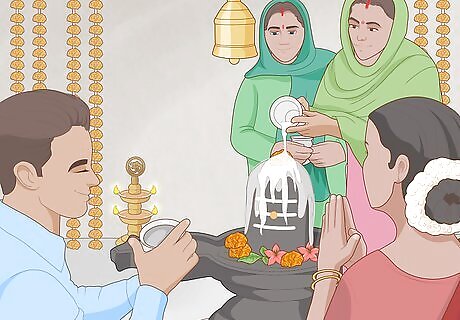
Attend celebrations of Lord Shiva at a temple to deepen your worship. Lord Shiva is often celebrated at Hindu temples, especially on Mondays. Going regularly to these celebrations at the temple can help to deepen your worship of Lord Shiva, especially if you would like to learn different chants, prayers, and meditation practices.



















Comments
0 comment